
























Stress and Deprivation: |
|
Long Island Expressway.
The stress of everyday life often begins with the drive to work. |

|
|
During the same few decades which saw great advances in the understanding of placebos, psychosomatic medicine also underwent significant changes, both in the research and clinical field and in the wider area of popular interest. The most important changes centered on the virtual abandonment of ideas about the role of unconscious emotions, early childhood experiences, and personality peculiarities--all derived from psychoanalysis. These ideas were replaced by a focus on manifest emotions, current life situations, and the socio-environmental circumstances in which disease occurred. 46 Scientists often stated the newer formulations in terms of maladaptation and loss or, more commonly, "stress" and "deprivation." Researchers drew from physiological theory and experiment and extended their concepts to all diseases, not just the classic "psychosomatic seven" (which included peptic ulcer, asthma, hypertension and, depending on the psychosomatic texts, colitis, cardiac arrhythmia, neurodermatitis, and hyperthyroidism). Yet at the same time scientists broadened the range of emotion-disease connections, the once almost unquestioned presumption of psychogenic etiology for the "psychosomatic" diseases gave way to an increasingly somatic orientation. In the realm of therapy and disease management, individual psychotherapy was replaced by stress reduction, structured mobilization against feelings of loss and loneliness, and increased reliance on the therapeutic options of biomedicine. The decline in the medical popularity of psychoanalysis, evident in the late 1950s and continuing in the 1960s and 1970s, set many of these changes in motion. 47 Leading researchers submitted analytically-based theories of peptic ulcer, asthma and ulcerative colitis to searching criticism and substantial revision. Therapeutic approaches relied more and more on new drugs and medical interventions and less and less on psychodynamic psychotherapy. 48 In the most dramatic case, scientists recently attributed the cause of peptic ulcer to a spiral bacterium, best managed clinically with antibiotics. This new movement even attacked conversion hysteria--one of the major contributions of Freud and a mainstay of psychosomatic theory. Several important critics started picking at the loose and unreflective consensus that had come to surround symbolically interpreted hysteria. One of the most influential critics, the respected neurologist Eliot Slater, in a widely noted paper published in 1965, called the diagnosis of conversion hysteria "a disguise for ignorance and a fertile source of clinical error." 49 |
Walter Bradford Cannon

|
Taught to deal with concrete and demonstrable bodily changes, we are likely to minimize or neglect the influence of an emotional upset, or to call the patient who complains of it "neurotic", perphaps tell him to "go home and forget it," and then be indifferent to the consequences. But emotional upsets have concrete and demonstrable effects in the organism. |
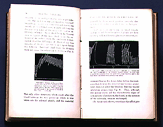
|
Walter Bradford Cannon (1871 - 1945)Bodily Changes in Pain, Hunger, Fear and Rage: An Account of Recent Researches into the Functions of Emotional Excitement, New York, 1915 |
|
This discrediting of psychoanalysis created a widening gap in psychosomatic thought that was steadily filled by a variety of theoretical alternatives. These concepts rested on more directly observable and less arcane linkages between emotions and the onset of disease. However much these theoretical alternatives differed, they had in common a psychobiological orientation, in the sense that they were clearly based on notions of holistic body and mind response of the total human organism to various stimuli, threats and assaults from its environment. A common origin explained the similar orientation of these new theoretical approaches, for they all derived in some sense from the fundamental work of early twentieth century Harvard physiologist Walter B. Cannon. Cannon’s general program was to show how the biological organism automatically mobilized its physiological and biochemical resources by a built-in "wisdom of the body," to defend itself against real or threatened assault. As an example of defensive mobilization, he explained in Bodily Changes in Pain, Hunger, Fear and Rage (1915), the organism responds to fear and rage as though preparing for fight or flight, by shutting down energy-storing functions and activating energy-releasing ones. In the 1940s, psychosomatic investigator Harold G. Wolff and his associates at Cornell Medical School incorporated many of Cannon’s ideas. 50 Wolff then moved from a model of organismic self-defense directly borrowed from Cannon to a generalized notion of "stress and disease," according to which disease was the "inept" version of a normally "apt protective reaction pattern" that allowed the human organism to mobilize against stressful situations or events. 51 |
|
Hans Selye
|
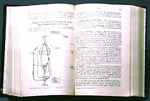
|
|
Stress became a leading new idea in psychosomatic theory in the 1950s and Hans Selye emerged as its best known and most effective proponent. Selye was a Vienna-born, Prague-trained physician and biochemist who settled in Montreal in the 1930s and wrote the leading endocrinology textbook in 1947. In 1950 he published a 1,025-page monograph entitled The Physiology and Pathology of Exposure to Stress, in which he elaborated ideas he had been developing since 1936 on what he called the "General Adaptation Syndrome." 52 Selye’s theory was that various "stressors" (cold, heat, solar radiation, burns, "nervous stimuli") produce a generalized, stereotyped response in the biological organism as it works to "perform certain adaptive functions and then to reestablish normalcy." As the organism automatically mobilizes its defense mechanisms, the hypothalamus (a nerve center at the base of the brain) is excited first. Later, after a chain of effects, the adrenal glands produce "corticoid" hormones. Corticoid hormones cause a characteristic set of somatic reactions including the development of gastrointestinal ulcers. |
Reader's Digest, February,
1957
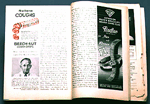
|
American Journal of Nursing,
March 1965

|
|
Due largely to their synthetic scope, Selye’s ideas swept the field and exerted an enormous influence. As F.L. Engel noted in 1956, "(Selye’s theory of stress and the diseases of adaptation) has permeated medical thinking and influenced medical research in every land, probably more rapidly and more intensely than any other theory of disease ever proposed." 53 The "stress syndrome" became even more popular and widely known in the sixties, partly because of its appeal as a replacement for older, increasingly discredited psychoanalytically-based psychosomatic theories and partly due to Selye’s charisma and prodigious output. He published forty books and over 1,700 scientific papers in the course of his career. 54 Selye was frequently quoted throughout medicine, nursing, and other health fields, and his fame spread to the wider culture, a reputation he deliberately cultivated by publishing such books for the general reader as The Story of the Adaptive Syndrome (1952), The Stress of Life (1956 and 1976), and Stress Without Distress (1974). Yet by the 1970s there was discord in the field of stress research as Selye conceived it. Growing confusion and controversy riddled theory and experiment. Some critics blamed Selye for having caused a great deal of it with his conceptual inconsistencies and his shifting and sometimes contradictory formulations.55 |
|
One major alternative challenged the stress model during the height of its initial popularity. George Engel and his colleagues at the University of Rochester Medical Center developed a theory they ultimately called "conservation-withdrawal." Like Selye, Engel and his associates focused on psychobiological threats to an individual’s well-being. But instead of considering threats as "stressors" that elicited defensive and protective behaviors from the hyperaroused organism, the Rochester group conceptualized the most important of these behaviors in terms of "losses" and "deprivations" that caused the organism to become withdrawn, depressed and shut-down.56 The Rochester group was generally attuned to psychoanalytic theory and remained committed to preserving a place for it even in psychosomatic medicine. They thus developed a complex scheme framed in terms of disrupted relationships between individuals, affects of "helplessness" and "hopelessness," and a state of "conservation-withdrawal" in which physiological function was depressed to the point of creating a "final common pathway" to illness and death. |
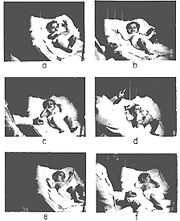
|
Monitoring
Monica
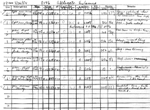
|
|
Monica's gastric (stomach) secretions, Engel and his associates found that physiological activity increased sharply, not only in the presence of food, but in the course of Monica's interactions with other trusted human beings. Joyful reunions following separation were associated with especially copious secretions. At the same time, when Monica emotionally disengaged and withdrew-- for example, in the presence of a stranger--there was a pronounced shutdown of physiological activity. In a sense, the body "withdrew" also, as if trying to conserve resources. |
|
|
The Rochester group’s work grew at the juncture between clinical studies on such diseases as leukemia and ulcerative colitis57 and a naturalistic experiment on an infant, "Monica," who was fortuitously admitted to Rochester’s Strong Memorial Hospital during the course of their work.58 Monica had been born with a blockage in her esophagus, which required that two surgical openings be made, one in her neck to drain anything she took by mouth and one in her stomach through which she could be fed. Monica did not do well and was admitted to the hospital at fifteen months in a dangerous condition. While she was being nursed back to health, Engel and his associates designed a study in which they measured her gastric secretion continuously and correlated their observations with Monica’s moods. They found that Monica’s physiological activity increased when she was engaged with the members of the group, whether joyfully or angrily, and especially on reunion after separation. By contrast, her gastric secretion ceased entirely, and even became unresponsive to histamine (which normally stimulates gastric secretion), when she withdrew physically and emotionally from a stranger who replaced the familiar members of the group. Monica’s behavior made sense as a psychological and physiological shutdown that served to conserve her organismic resources. It also helped put into perspective the separately collected clinical data on patients who articulated feelings of "giving up" or being "given up" shortly before the onset or exacerbation of a variety of somatic diseases.59 |
Dismissal (or) Pink Slip,
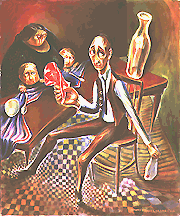
Howard Taft Lorenz The shock to the system caused by loss and broken trust is starkly captured in this WPA painting by Lorenz. |
B. Kent Houston and C.R. Snyder, editors, 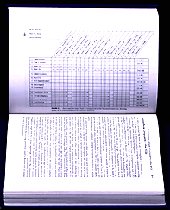
Type A Behavior Pattern: Research, Theory, and Intervention, New York, 1988 |
|
By the 1970s the psychosomatic field thus had a pair of new concepts, one emphasizing stress-induced hyperarousal and the other deprivation-caused hypoarousal. A major achievement of the next decade was the merger of this pair of ideas into one model of socio-environmental challenge and response and the connection of that model with other streams of work focused on "life change events" (divorce, bereavement, and job loss) and "social stressors" (high intensity living and work situations and major social dislocations from normal support networks).60 The seventies were also notable for the application of progressively more sophisticated biostatistical techniques and more rigorous epidemiological study designs.61 Striking landmarks were Sidney Cobb and Robert M. Rose’s study of "Hypertension, Peptic Ulcer, and Diabetes in Air Traffic Controllers," the 1973 conference in New York City on "Stressful Life Events," John Cassel’s Wade Hampton Frost Lecture of 1976 at the American Public Health Association on "The Contribution of the Social Environment to Host Resistance," and David Jenkins’s report in the New England Journal of Medicine the same year of substantial evidence confirming the significance of the "Type A" behavior pattern as a risk factor for coronary artery disease.62 Although there were critics of some of this new work in psychosomatic medicine, the strong consensus in the 1970s--both within the psychosomatic field and more broadly in science and medicine--was that studies on the relationship between social support, life stress, and disease onset were significant and very promising for the future.63 It was well established in the popular imagination that the stress of modern life, work-related tension and anxiety, and devastating tragedy accompanied by the loss of community could lead to very severe health consequences. |
|
The chief and primary cause of ... [the] very rapid increase of nervousness is modern civilization, which is distinguished from the ancient by these five characteristics: steampower, the periodical press, the telegraph, the sciences, and the mental activity of women. George M. BeardAmerican Nervousness, Its Causes and Consequences, 1881 |
Saratoga Spa,
N.Y., ca. 1950s

|
A vacation "in the country," away from the routines of life remains a tried-and-true remedy for "stress." |
|
Also notable in the seventies was the translation of new theoretical insights into practical intervention strategies, sometimes actively promoted by the researchers themselves. Thus, Meyer Friedman and Ray Rosenman, the physicians who initially defined the Type A concept, published a popular book which included practical chapters on how to "reengineer" one’s daily life and develop "drills" to replace old and harmful habits.64 Similarly, Harvard’s Herbert Benson promoted a simple, "noncultic" technique to elicit the "relaxation response" as a counter to the stress-induced "emergency response." He showed that physicians could teach the relaxation response to patients as either a preventive or therapeutic strategy. 65 Several other investigators introduced "biofeedback" techniques (in which various physiological variables such as heart rate and muscle tension were displayed to the patient) as practical clinical methods for managing hypertension and a variety of other conditions. 66 |
Volvo Assembly Line
, Sweden

|

|
|
In 1987 the Volvo Truck Corporation initiated a significant effort to improve the environment of its factories and alter the assembly process. Scientists documented blood pressure, stress hormones and attitudes of workers before and after restructuring the way car and truck engines were put together and found that after the changes, perceived stress, blood pressure and epinephrine levels of the employees decreased and morale increased. |
|
